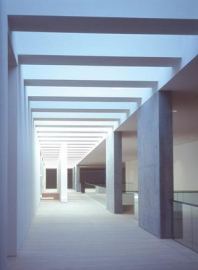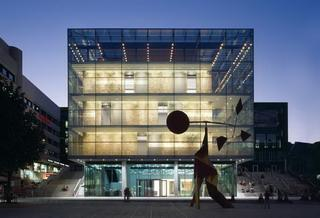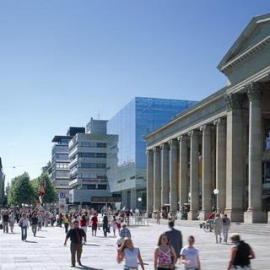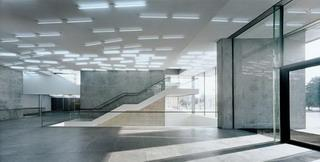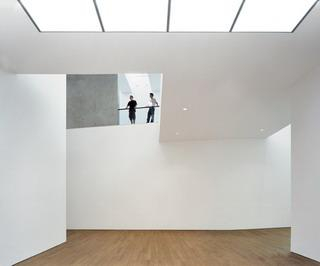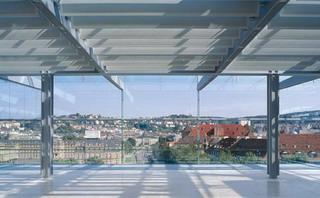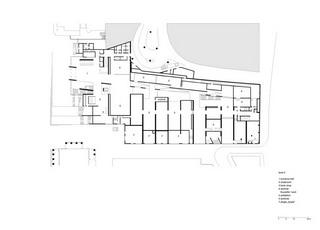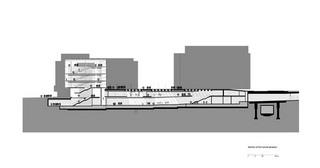Stuttgart Museum of Art
The area known as the Kleiner Schlossplatz originally a covering of a traffic intersection completed in 1968 has been re-planned a number of times since the early 1980s when traffic planning became completely outdated. With the new Stuttgart Museum of Art, a major department store behind the Königsbau and an office building on the Kleiner Schlossplatz, the opportunity arises to improve the most important central area of downtown Stuttgart. In a classical urban planning approach the new, distinct borders of the buildings describe and define the square and the streets.
A public space will be defined diagonally across the Kleiner Schlossplatz to the New Castle forming a flowing transition from the Kleiner Schlossplatz to Königsstrasse on a number of planes. The element of steps as a place for strolling and tarrying, as a meeting point and stage for urban activity is attractively staged.
Here, the space will not simply be held by a public building, but a space will be created both inside and outside offering the citys residents and visitors a place for communication. The museum and the surrounding space will form an active component of the urban center and public life. While the rooms of the permanent exhibition are completely introverted, the cube for the temporary exhibitions is organized in such a manner that the exhibition rooms are closed off in the interior, but the connections are all on the outside of the cube.
This intermediate space acts like a display case for the art; it has a special external effect for the museum and the city. The transparency and playfulness of the glass cube is an integral component of the design. Without disturbing the character of the quiet, introverted rooms, the roof of the cube is public and openly accessible. It is a restaurant, meeting place and venue for events.
The glass cube has a length of almost 30 meters. The ticket office, a seminar room, a museum café and museum shop are located on the entrance level. From here the path leads either to the long, subterranean permanent exhibition or up the large staircase to the interior of the stone body, to the glass case which forms a building within a building. Here, there are three levels available for temporary exhibitions. Carefully planned openings allow for insights and outsights. On the top level of the cube a large, glassed room for events is planned.
The glass roof, which in some sections can be opened with hatches, sits on a light support grid and twelve columns. Like the vertical exterior skin, it consists partially of opaque glass.
The exhibition area for the permanent collection of the museum has an unmistakable character as a result of its special spatial situation. It is located in the base of the new Kleiner Schlossplatz and the no longer needed tunnels which previously served automobiles and streetcars on two different levels.
The two exhibition levels are directly interwoven with one another via airspaces and galleries and provide especially high presentation rooms. The subterranean continuum in the base of the square also seeks contact with the public. On the one hand it is connected to the entrance area via large air spaces. On the other hand, a large band of light in the square should point out the art secreted in the earth. The under world and over world enter into a dialogue with one another through the glass; during the day natural light will enter the areas below the square; with the fall of night the light will change its direction, the artificially illuminated band will suddenly radiate upwards and serve as a poetic symbol for the city for some distance.

